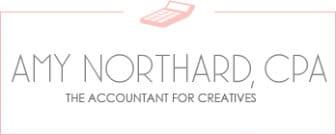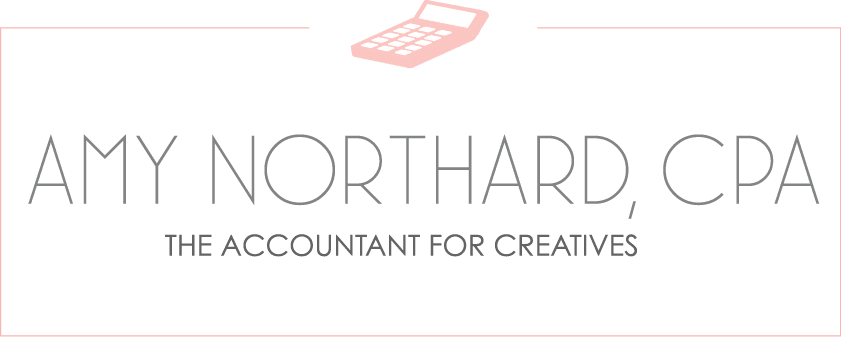Have you ever found yourself wondering “Do I even know how much money I need to make this month to keep my business up and running?”
It’s a common roadblock for creative small business owners, and oftentimes entrepreneurs are so busy working in the business that the only time they see if they are making a profit is at tax time. I know that it can be difficult to make time to wrap your head around all those numbers, but it’s less painful and time-consuming than you might think. Today I’m going to walk you through an easy way to track your monthly expenses and create savings goals.
We’re going to do what I like to call a Business Breakeven Break Down. It’s a little something I created when I first started working with creative entrepreneurs. This plan will show you what you’re financially responsible for every month so you can start building a strong foundation and make educated money decisions for your business.
No matter what season your business is in – whether you’ve been in business 6 years and your profits well exceed what you need, or you’re just getting started with little to no money in the bank – your breakeven is the same equation.
If you’re spending more than you make, you’re in the negative which is what you want to avoid. To get a clear picture of your business breakeven, you’ve got to know what your business expenses and savings goals are first. Even if you’re making plenty of money to cover everything you need and want, it’s still important to understand what your expenses and goals are. There may be places you can make some adjustments or cuts and keep more of that money in your pocket. Who doesn’t love that!
To help you, I created a Business Breakeven Break Down workbook. You can download it below. I’ve included example Breakeven numbers in the workbook to help get you started. If you have multiple businesses, duplicate this workbook as many times as you need so you understand the breakeven point for each entity.
Items to include:
1. Fixed Expenses
The bills you know the amount of every month that don’t change – studio rent, business insurance, online management system, internet.
2. Flexible Expenses
The bills you have every month but you don’t know the exact amount – electricity, office supplies, hourly outsourced tasks. You’ll want to put an average amount for each of these. It’s better to overestimate on unknown expenses so you’re prepared instead of underprepared.
3. Budgeted Expenses
Similar to flexible expenses but these are items that aren’t necessarily required to keep your doors open. Think of these as nice-to-haves. If money gets tight in your business, this is the first place you’ll start cutting expenses. Include things you budget for every month like investing in education and coffee dates with clients and vendors. If you don’t have a budget for these kinds of things, now is a great time to start so you don’t overspend.
4. Savings and goals
This is very important so please don’t skip this one. If you don’t already put money aside every month for business savings, I strongly encourage you to start doing that now. Things happen in your business that you’ll need your savings account for like your computer unexpectedly dies. Your business savings account needs to be a priority. If you want to save up for a shiny new lens or a course you’ve had your eye on for a while, divide the cost over several months and save for it strategically.
Items to exclude:
An expense you don’t include in your Business Breakeven Break Down is the cost of the products you sell to clients. These are considered a product expense (or in accounting terms – Cost of Goods Sold or COGS), not a business expense. The things you put in your workbook will be business costs that happen whether you make a sale or not.
For example – You’re a wedding photographer and sell albums. The sale of that album is part of your business but it’s not a guaranteed expense every month. It’s directly related to your product sale. You only buy that album when your client orders it which varies every month. We’ll talk more about products in the next post!
Take Action
Take your time breaking it down. Yes, it’ll take some time but see it through. Get the very best monthly breakdown you can to make sure you’re profitable and set up for success!
The 6 Step Process
- Open up any accounts you use to pay for things in your business – checking, savings, credit cards, Paypal, and any other online processors.
- Find all of your reoccurring monthly business expenses – rent, monthly subscriptions, small bills, large bills – and list the name and amount under Fixed or Flexible Expenses in your workbook.
- For all of the expenses that aren’t reoccurring or completely necessary, like coffee dates, make sure you create a budgeted expense for those – name and amount.
- And last but not least, savings and goals. Dream as big as you’d like here. A healthy business has savings in case of emergencies, to reinvest back into your business when the right opportunity arises and for peace of mind. Don’t skip this part. Make it a priority to build up your business savings even if you start small.
- Once you’ve tracked everything down and created goals, total up each category.
- Now add all of the category totals together for the total business breakeven at the bottom.
Celebrate!
This is your monthly Business Breakeven Break Down including your savings goals. This is the amount you need to profit to break even in your business. You now have a clear picture of your monthly business needs so you can start aligning your sales goals to greatly exceed that.
Does seeing the numbers all laid out surprise you or is it about what you thought it was? Now that you have everything written out, are there places you could cut costs, could you increase your savings or treat yourself to more fun money or increase the amount you budget for education? Let’s chat about your plan in the comments below.

